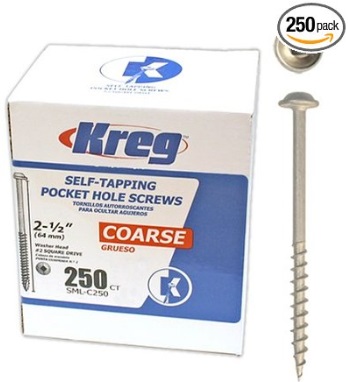Home Site Map - Techniques - Structure -
Carnation ICF
Best ICF system
Having gained experience with ICF construction and having studied building science, this describes what I believe to be the ideal ICF system. In accordance with building science best practices it puts all the EPS insulation on the outside of the concrete wall to couple the concrete thermal mass with the house inside temperature. On the inside of the wall Carnation ICF uses regular low cost construction plywood that is stripped off after the concrete hardens and is reused. The innovative design of the EPS block allows fully interlocked corners to be easily made on site from straight blocks, thus reducing shipping costs, reducing inventory, and simplifying purchasing.
Building Science
Everything needs to start with Building Science, ie start by figuring out the perfect wall design (that meets building code requirements).
Insulation requirements
Insulation is measured in R-value. Type 1 EPS gives you about R-4.17 per inch thickness (in cold climates). Type 2 EPS gives about R-4.5 per inch (in cold climates). For walls, 2012 energy code in cold climates in America (climate zones 6, 7, and 8 which includes Wyoming, Montana, North Dakota, South Dakota, Minnesota, Wisconsin, Vermont, New Hampshire, and Maine) requires a minimum R-value of 25. That equates to a Type 1 EPS thickness of 6 inches. That is the minimum code requirement, but many people in cold climates will want to make a super energy efficient house and that means they will want to go up to about R-40 for the walls (10" of Type 1 EPS or 9" of Type 2 EPS), but a more common choice will be about R-33 which is about 8" of Type 1 EPS or 7.5" of Type 2 EPS.
What is needed is an ICF system that meets 2012 Energy Code in cold climates at least cost and yet it is easy to optionally increase to a greater R-value. That means the optimum ICF system needs to have 6" of EPS as standard and needs to allow EPS sheeting (eg 1.5" or 2" thick) to be added for those that would like super energy efficiency.
In less cold climate zones, the provided R-value exceeds minimum building code, but allows the builder to market the house as super insulated.
Insulation on outside
The next question is where to put the insulation. Traditional ICF systems (in addition to only providing about R-23) have half the insulation on the inside of the concrete and half on the outside. By considering building science and the perfect wall design we see that the insulation should actually all be on the outside of the structure, ie on the outside of the concrete. You want the structure (the concrete) on the inside of the building envelope so it stays warm and dry. Also you want to get the concrete as close to the inside of the wall as possible in order to thermally couple the huge thermal mass that concrete provides with the warm inside house temperature. You want the thermal mass to be at the same temperature as the inside living space, ie about 70 degrees F. The water liquid control layer wants to be on the outside of the wall and EPS with its low water permeability provides this nicely.
Carnation ICF design details
R-27 insulation as standard
Carnation ICF provides 6" thickness of Type 2 EPS on the outside of the concrete and deliberately no insulation on the inside of the concrete. The EPS that is the outside of the ICF wall is produced in a mold to a design that has been arrived at through experience to make the construction process easy.
Adding additional insulation
For folks that want greater than R-27 insulation it is easy to attach a sheet of EPS to the outside of the ICF EPS. This is done using large washers and self tapping screws into the ICF webbing. Also some foam adhesive is used.
It is best if the optional externally added EPS sheet is 1.5" thick or greater so that it is rigid enough to avoid getting a wavy wall. It can be added after the concrete pour, but it is best to add it before the concrete pour (with the joints in the 8'x4' sheets arranged to be in different places from the joints between the ICF blocks) so it all adds to the rigidity and bracing of the wall when pouring the concrete.
It is good to use Type 2 (15 psi) EPS sheets (same higher density as the Carnation ICF EPS) because that will provide good protection of the walls from dents such as caused by a kid on a bike.
When building an ICF wall on a concrete foundation slab it is best to start off with a perimeter of 2x4 lumber nailed with a nail gun to the concrete slab. This forms a guide to ensure the wall is not wavy and also provides a lip at the bottom to withstand the lateral force on the wall from the wet concrete and to constrain the wet concrete from leaking out. If fitting outer EPS sheeting before the pour then the perimeter of 2x4s will be positioned outwards a further distance corresponding to the EPS sheet thickness.
1-3/4" diameter washers...
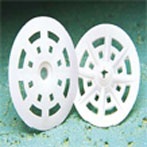 http://www.ebuildingproducts.com/proddetail.php?prod=DP-DP300&cat=381
Under 6 cents each.
http://www.ebuildingproducts.com/proddetail.php?prod=DP-DP300&cat=381
Under 6 cents each.
4-1/2" self tapping screws...
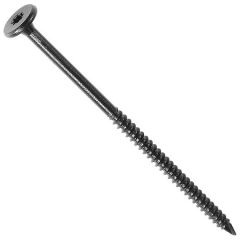
http://www.loghomestore.com/1747-headlok-panel-fasteners-2-7-8-to-8-1-2-inch.php About 33 cents each.
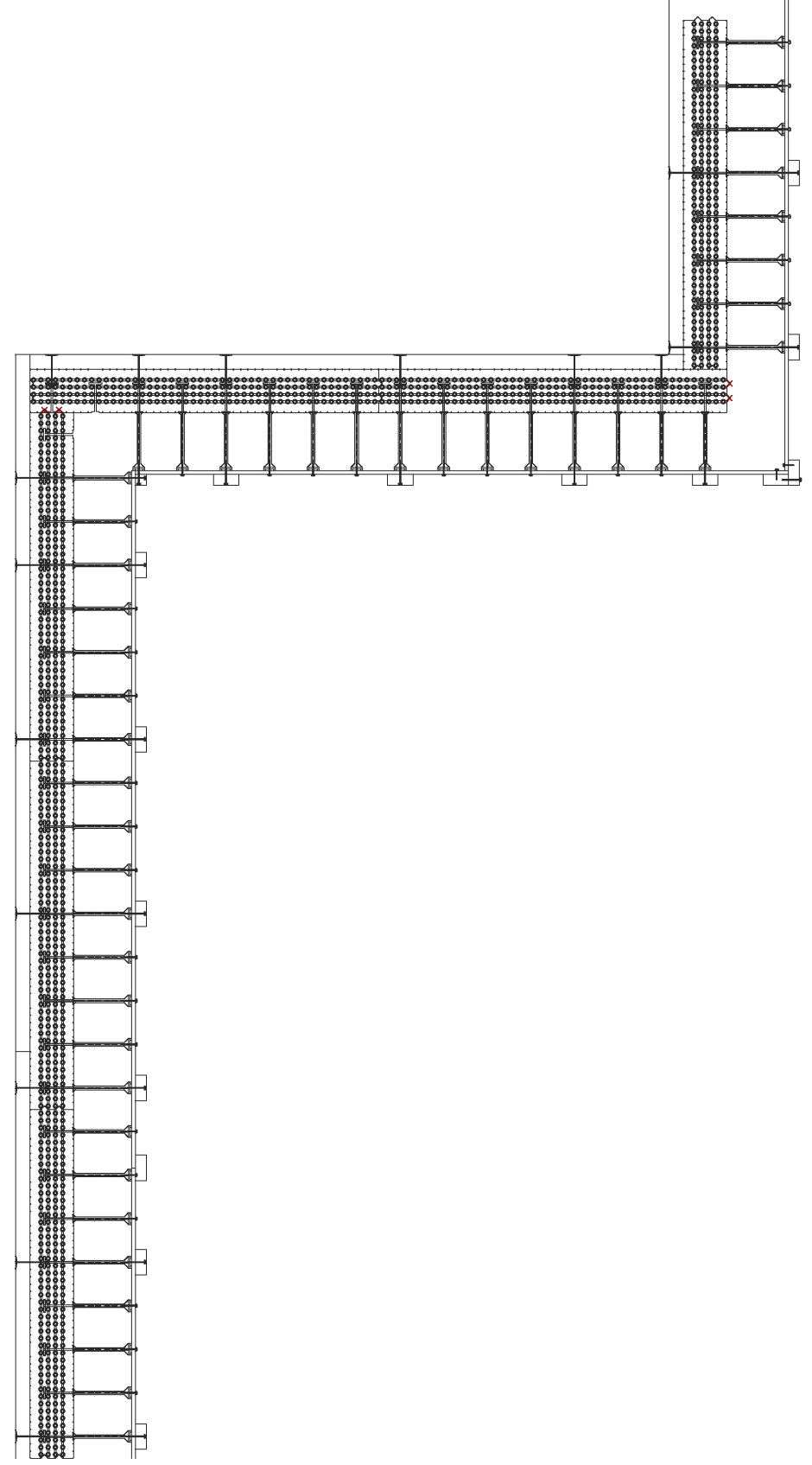
Forming concrete on inside
The reason of course that half the EPS is on the inside in a traditional ICF system is that it is used to constrain the wet concrete to form the wall. When using traditional ICF, I strip away the interior ICF EPS once the concrete has hardened. This is a lot of work and is also of course very wasteful of EPS. It leaves the wall with only 2-5/8" of EPS insulation, so lots of EPS sheets need to be attached to the outside of the wall to get it up to the required insulation value.
With Carnation ICF, regular construction grade half inch plywood is used on the inside. You can even use OSB if you want. The plywood is unscrewed and removed once the wall concrete has solidified. The plywood sheets are used in their full uncut 8 foot x 4 foot form so can be reused for other ICF pours or for building other things such as the roof.
The 8'x4' plywood sheets screw on into the ICF webbing using 1-1/4" self tapping screws. Every two feet it is good to include vertical 2x4 lumber to brace the wall to withstand the wet concrete pressure. Where there are vertical 2x4s then 2-1/2" self tapping screws are used instead of 1-1/4". There is no need to be super accurate in the screw placement. A tolerance of +/-1/2" is fine. Mark a pencil or chalk line grid on the plywood sheet and put screws where the lines cross. There is no need for pilot holes in the plywood or ICF webbing as the screws are self tapping. There is no need for separate washers when screwing on the plywood.
1-1/4" self tapping screws with washer head...
2-1/2" self tapping screws with washer head...
As well as being great from a building science perspective, not having EPS on the inside makes it easy to implement elevator shafts and swimming pools without having to strip away the EPS like with other ICF systems.
Where there is no vertical 2x4 bracing lumber, typically two 1-1/4" screws are used per vertical webbing plate. These go into the top and bottom landing zones (identified by indented cross lines). Where there is a vertical 2x4 brace then typically just one 2-1/2" screw is used per ICF web.
Block height
The blocks are 1 foot tall. The reason for not being any higher is that structural engineering rebar placement often calls for horizontal rebar to be 12" on center. If the blocks were higher than 12" then it would be very difficult to fit the horizontal rebar.
Block width
Concrete cavity widths of 12", 8", and 6" are accommodated using different plastic webs with the same EPS molding.
EPS mold details
Round turrets of 5/8" diameter on a 1" pitch are along the length of the top. This allows blocks to be offset horizontally in 1 inch increments. Four rows of turrets are provided to ensure reliability in the fit, even if some of the turrets have been damaged on the job site. The turrets are 1/2" high. They have 1/8" 45 degree chamfers to guide then into the holes on the underside of blocks, thus making wall building quicker and easier.

The corresponding holes on the underside of the block are 5/8" diameter and 9/16" deep and do not have chamfers. The holes being 1/16" deeper than the height of the turrets ensures that the blocks always fully seat against each other. That absence of chamfer on the holes provides some space for any excess adhesive or dirt.

Running the full length of the block are five continuous flat surfaces. On the outside and inside of the EPS block two of these surfaces are over 1" wide and provide the primary gluing surfaces for foam adhesive. It is quick and easy to run the glue gun along these wide strips to deposit a nice even bead of adhesive.
Between the turrets lengthways is a ridge 1/4" wide and 1/4" high so that there is no direct path for the concrete between blocks. On the underside the groves between the holes are 5/16" deep and 1/4" wide.
Offset by 1/2" relative to the grid of turrets are 1/6" wide 1/8" deep vertical grooves on both sides of the block. These act as guidelines when cutting a block to the required size (with a cut length increment of 1").
At one end of the block are two 1" wide 1/2" tall triangular tongue ridges. The other end has two 1" wide 1/2" deep grooves. These ensure good positive alignment between bricks along the wall. In cases where a block has been cut to a custom length or a corner is being formed or where there is a window opening, it is easy to cut off the triangular tongues. On the female end there is still plenty of flat area for gluing.
The plastic webbing pieces slot in from the top of the block. They seat solidly to the exact and consistent depth. The slot is 1/4" wide to accept the 3/16" wide webbing plate and strap. Because the EPS blocks are 6" wide there is nearly 4" of EPS to take the wet concrete force and nearly 2" to keep the block rigid and avoid breakage.
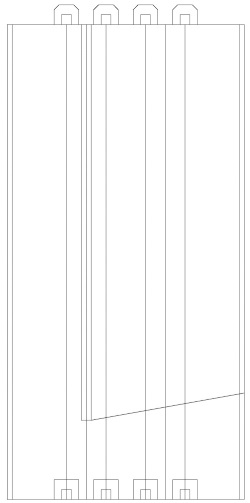
In order to be able to clearly see where the webbing plate is for screwing it is identified by the word "Carnation" embossed vertically. Within that vertical strip, the three preferred screw location areas are identified with indented cross lines. Typically the screw is aimed at the center of the cross, but there is a significant tolerance accommodated in screw placement.

The EPS used is Type 2 (50% higher density that regular Type 1 EPS). The polystyrene density is 1.5 lb/ft3 (0.024 g/cm3). The compressive spec is 15 psi which makes it stand up well to abuse on the construction site. On the final house, just applying 3/4" stucco is sufficient to avoid dents from kids on bikes. The use of higher density EPS also increases the R value to about R-4.5 at 40 degrees F, so the house is better insulated. Carnation ICF provides R-27 insulated walls even without the addition of extra EPS sheeting.
Plastic web details
The internal plastic web is made from molded polyethylene. It slots into the EPS block that forms the outside of the wall. On the inside it provides a plate area for plywood to be attached with self tapping screws.
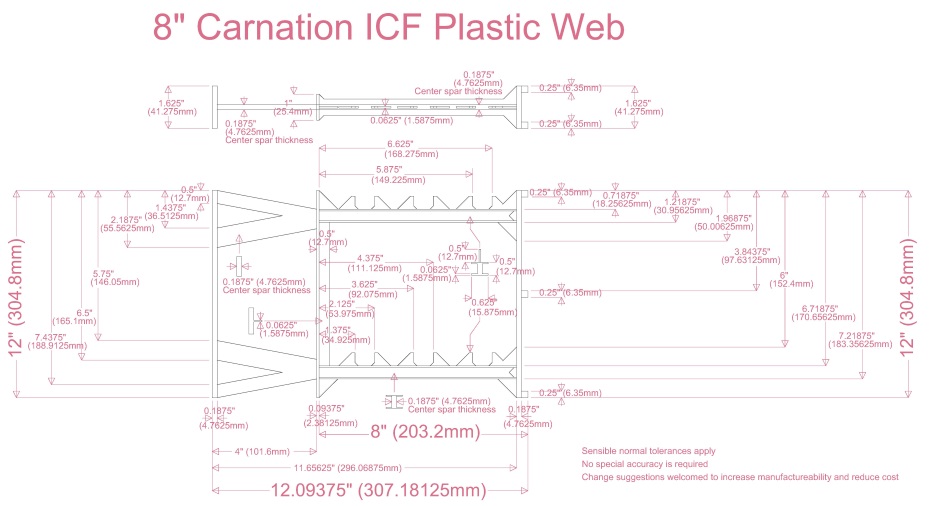
The internal plastic web on the 8" cavity and 6" cavity variants support up to three parallel lengths of rebar at the same level. Lugs that are 1/2" high provide accurate and reliable positioning of the rebar and reduce the amount of rebar tying that is needed. The rebar sits within the provided U's. Relative to 8" thick concrete, the center of the rebar is at 1-3/4", 4", and 6-1/4". Relative to 6" cavity concrete the rebar positions are 1-3/4", 3", and 4-1/4". Rebar up to a diameter of 3/4" is easily handled (#6 rebar), and you can also use larger diameters if needed.
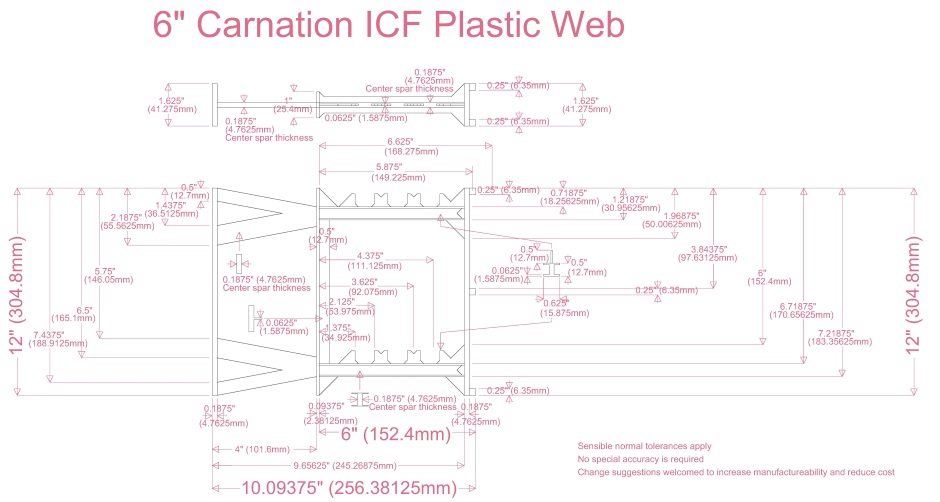
The 12" cavity variant supports up to five parallel lengths of up to 3/4" diameter rebar at the same level. Relative to the 12" thick concrete, the center of the rebar as determined by the U's is at 1-3/4", 4", 6-1/4", 8-1/2", and 10-1/4".
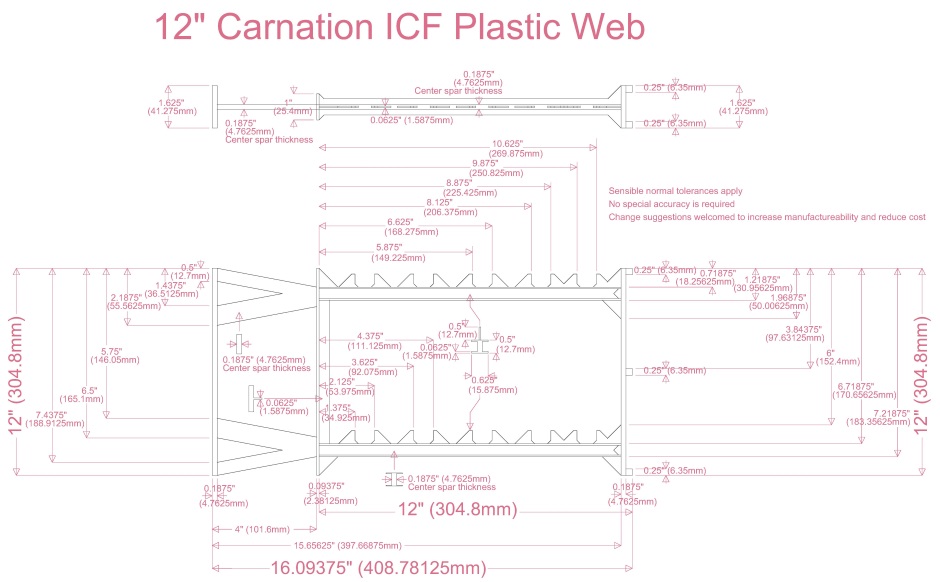
Typically rebar is placed on the upper spar of the ICF web. This is a distance from the top of the ICF block to the center of a 1/2" diameter rebar of 2-1/2".
Rebar can also be supported by the lower spar of the ICF web. The rebar is threaded through the blocks from one end. This is a distance from the bottom of the ICF block to the center of a 1/2" diameter rebar of 3-1/2". The bottom spar is typically used for rebar above window and door openings. If using bucking that extends 1-1/2" into the cavity (ie the bucking is made from 2-by lumber) then the center of 1/2" diameter rebar will be 2" from the concrete edge (which will please structural engineers).
For under window openings it is typically necessary to cut the height of ICF blocks from 12" down to eg 9". Rather than loose the top spar of the ICF web it is better to cut the required distance off the bottom of the ICF web and then slide it down further into the EPS slot. This gives you one spar at whatever height you want and thus allows you to position the rebar at whatever height you want.
It is important to minimize the ugliness associated with the plastic web once the plywood has been removed from the inside of the wall. This is achieved using six 1/4" square post lugs that keep the actual face of the web 1/4" below the surface of the inside concrete face. Having the lug posts on the outside edges of the plastic web plate ensures that the web plate is kept parallel with the plywood.
Instead of having a specific place that the screws from the plywood need to hit, there is a 1-1/2" wide web plate area for the self tapping screw to hit so there are no worries about tolerance.
The plastic webbing is made from Polyethylene (PE) and is designed to be rigid and relatively warp free. It sits in a deep and accurately perpendicular slot in the EPS block. This all means that the web plate landing area is in a consistent position even without the plywood attached, thus making it easy to attach the plywood.
Plywood details
The plywood is totally standard and the builder is free to buy it from their local supplier of choice, which significantly reduces costs.
Half inch construction grade plywood is the best choice. This is typically known as CDX plywood. The actual width used does not matter. In practice 15/32" is often sold as 1/2" plywood. You can use say 3/4" if you prefer but 1/2" is plenty strong enough when braced with vertical 2x4s every 2 foot.
There is no need to cut the 8'x4' sheets except to fit around any obstacles or lengths associated with the house you are building. By keeping the plywood as 8'x4' sheets it allows it to be better reused after it is stripped from the solidified concrete. Also bigger sheets means less joints for the concrete to try to seep through.
To reduce the amount that the concrete sticks to the plywood, so it is easier to remove after the concrete has solidified, it is a good idea to spray the inside face with varnish. With or without varnish it is best to remove the plywood the next day after the concrete pour, ie before the concrete has fully cured, so that it is easy to remove.
Construction grade plywood has a rough surface. This is good because it allows a final topping stucco coat to adhere well.
The plywood 8'x4' sheets can be fitted vertically or horizontally, but horizontal is the typical way. Prior to fitting the sheet, mark it with a 6" grid starting 3" in from the edge along the horizontal using a calk line or a pencil. Draw another line 3" up from the bottom of the first sheet and then mark a 6" grid from there upwards.
Along the bottom of the bottom plywood sheets screw or nail on 2x4 lumber (fixing to the 1-1/2" edge). With the plywood in the right place against the ICF webbing (3" from the sheet edge to the first ICF web), use a nail gun to nail the 2x4 to the concrete floor. Use 1-1/4" self tapping screws at the line grid crossover points in all locations that will NOT have vertical bracing lumber. There is no need to pre-drill holes in the plywood because the screws are self tapping.
There is no need for a special jig for fitting the plywood to the ICF webbing. The plywood is just screwed on as the wall is built. The design's ability to allow for +/-1/2" tolerance in the positioning of the self tapping screws makes this easy. The use of 8'x4' uncut plywood sheets reduces cutting costs, increases plywood reuse, and reduces the number of gaps for concrete to try to seep through. The use of 2x4 lumber over the joints between 8'x4' sheets means that the plywood does not need to be tongue and groove.
 http://www.homedepot.com/p/Unbranded-Sheathing-Plywood-Common-15-32-in-x-4-ft-x-8-ft-Actual-0-438-in-x-48-in-x-96-in-915378/100092909?quantity=10&str_nbr=4712#specifications
15/32" 8'x4' sheet $18.25
http://www.homedepot.com/p/Unbranded-Sheathing-Plywood-Common-15-32-in-x-4-ft-x-8-ft-Actual-0-438-in-x-48-in-x-96-in-915378/100092909?quantity=10&str_nbr=4712#specifications
15/32" 8'x4' sheet $18.25
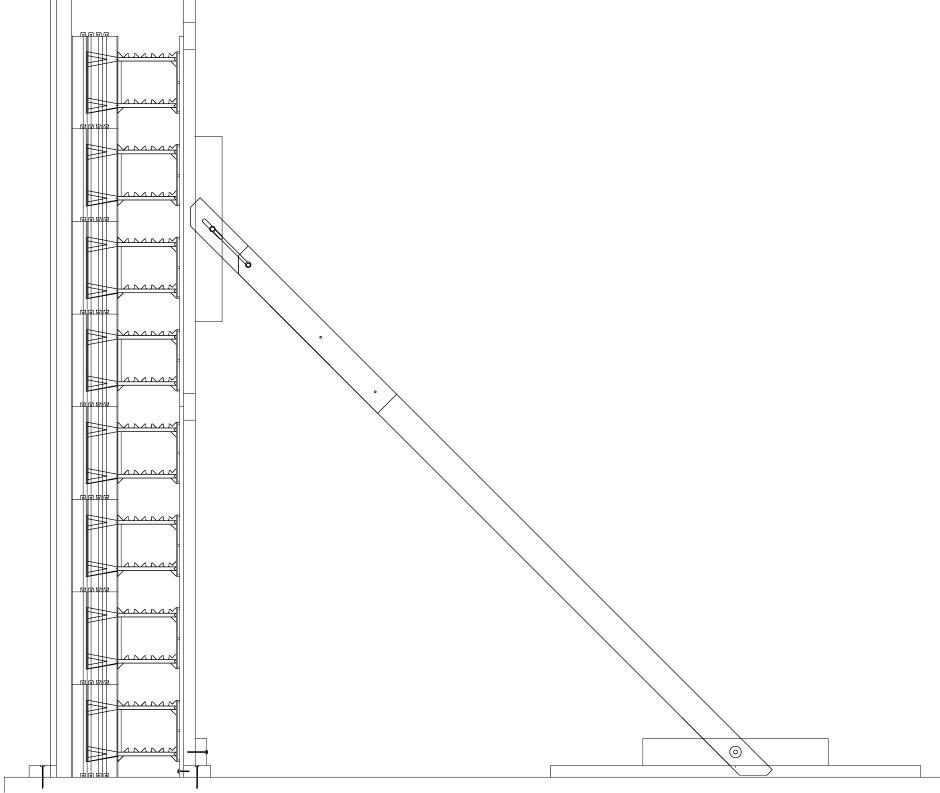
ICF Bracing
It is ok to use the metal bracing systems that are common in ICF construction, but using them is not a requirement. The easiest and least cost way is to use 2x4 lumber about every 2 foot along the plywood on the inside of the wall. Use the 2x4s with the flat face against the plywood as that imposes the least requirement for straightness on the 2x4 sticks. You can hold the wall straight using adjustable 8' long 2x4s at a 45 degree angle from the floor. If you are implementing a concrete floor above the wall and the wall section is only short then you may find that this holds the walls square without needing any 45 degree lumber. Whatever method is used it is important to always check the walls are straight and true before the concrete is poured.
Fit vertical 2x4 lumber at 2 foot intervals along the wall. Pre-drill the lumber on its flat face with holes starting 1-1/2" from the bottom and then every 6" up the stick. Use a drill bit (eg from Kreg) that also countersinks the holes to a depth of 1/4". Attach the 2x4s to the ICF webbing with 2-1/2" self tapping screws using every other hole, with a few other screw holes used if circumstances dictate.
Where there are horizontal joins between 8'x4' plywood sheets fix horizontal 2x4 lumber over the joins (fixed to the vertical 2x4 lumber). Where there are vertical joins between the plywood sheets fix vertical 2x4 lumber (fixed to the horizontal joint covering 2x4s) (making clearance indents for screw heads if needed).
Where 45 degree lumber props are required, attach them to additional 2' long 2x4 lumber positioned on edge to the vertical 2x4 lumber that is flat against the plywood (with the edges aligned to form a flat surface). Make the 1/2" attachment hole 5'11" up from floor height and 1-1.4" in from the edge.
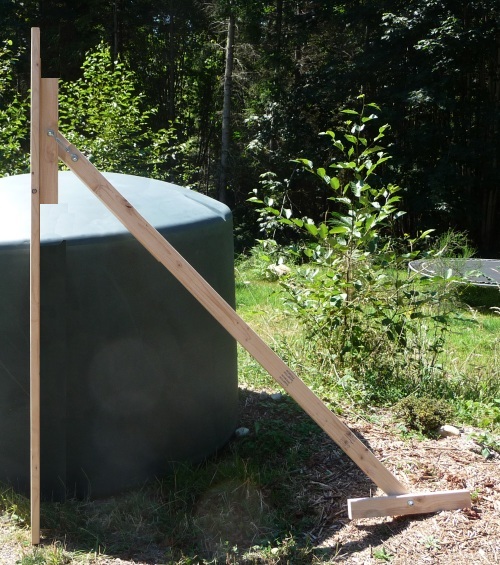
Making corners and T pieces
Corners are made on the job site out of regular straight blocks. This reduces shipping costs, reduces inventory, and simplifies ordering. There is significant innovation associated with the way corners are formed using Carnation ICF. The cleverness is in the way the turrets are placed such that the overlap of blocks can be alternated from course to course, thus locking the corners securely and accurately.
When adding the course of blocks above, just cut off with a calving knife the turrets from the block underneath (shown with a red cross in the picture below) that correspond with the inside and outside glue areas of the block above. This allows the block above to seat securely on the block beneath and securely locks the corner together with the correct exact dimensions.
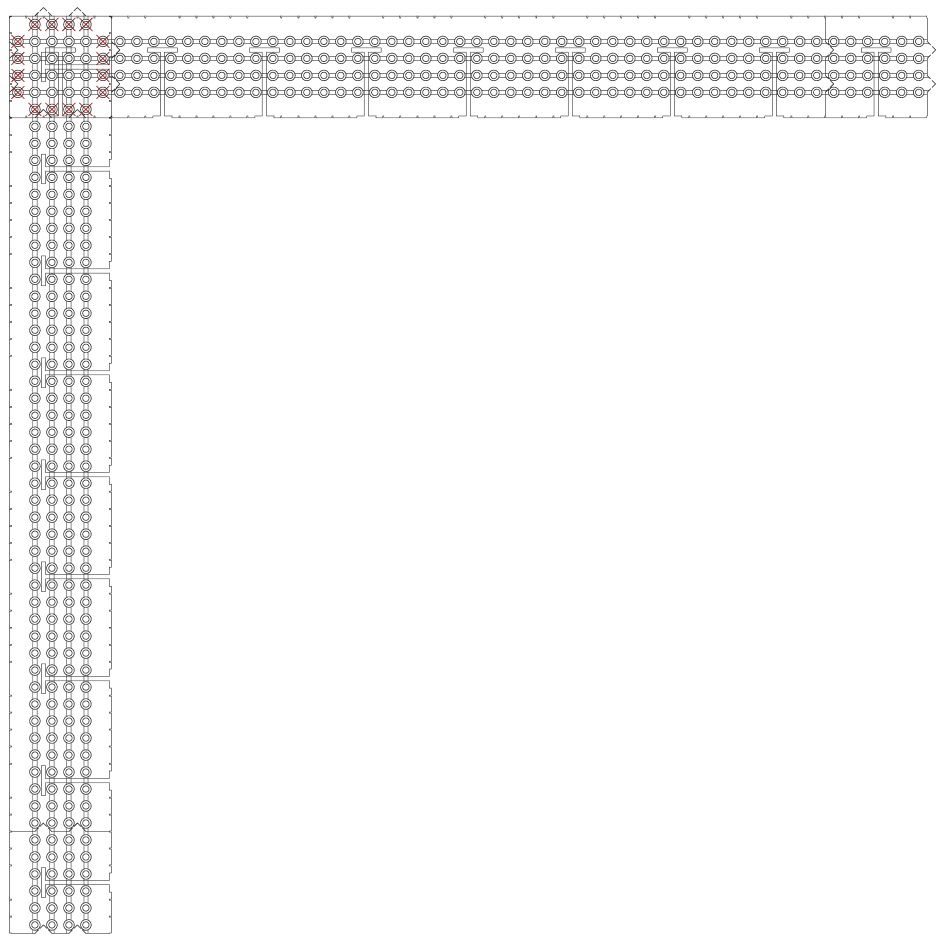
Concrete seepage at the corner is prevented using foam adhesive. Because the outer EPS is thick (6" thick) it provides a large gluing area. Just do a square cut with a serrated calving knife or saw, using the groves on both sides of the EPS as your guide. If it is the end of the block then just cut off the two triangular strips. Put foam adhesive on the cut surface and butt it up to an uncut inside edge of the EPS block on the other wall. You can easily make T pieces as well as make any corner angle you want.
In addition to this providing great flexibility, making everything out of straight blocks reduces shipping costs (as everything can be flat packed) and also makes ordering easier and reduces inventory costs. There certainly is no need to worry about left and right corners like on some ICF systems.
 http://www.amazon.com/gp/product/B0045LPK2S/ref=oh_aui_detailpage_o03_s00?ie=UTF8&psc=1 $10
per 26.5-Ounce can.
http://www.amazon.com/gp/product/B0045LPK2S/ref=oh_aui_detailpage_o03_s00?ie=UTF8&psc=1 $10
per 26.5-Ounce can.
Finishing concrete on inside
Depending on the flow-ability of the concrete mix used, after the plywood is removed you will either see just the 6 small corner posts (each 1/4" square) or you will see a 1/4" deep indent where the web plate face is. In the case of the corner posts these are easily covered with an 1/8" thick layer of topping stucco. In the case of indents these are easily filled with stucco mortar followed by the stucco topping coat.
The construction grade plywood will leave a rough wood grain finish, but this is good because it provides better adhesion for the topping stucco.
In applications where you want to achieve an "unfinished space" look for property tax reasons then just use an 1/8" thick layer of mortar stucco so that the wall looks like bare unfinished concrete (but without any unsightly plastic webbing visible).
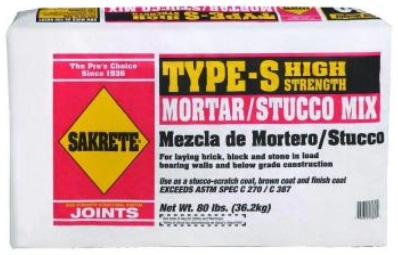 http://www.homedepot.com/p/SAKRETE-80-lb-Gray-Type-S-Mortar-Mix-65302880/100350211 $5.49 for 80lb bag
http://www.homedepot.com/p/SAKRETE-80-lb-Gray-Type-S-Mortar-Mix-65302880/100350211 $5.49 for 80lb bag
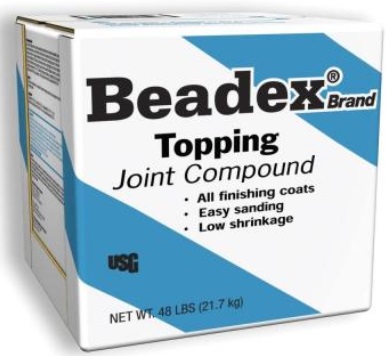 http://www.homedepot.com/p/BEADEX-Brand-5-75-Gallon-Topping-Pre-Mixed-Joint-Compound-385254/202328854?N=5yc1vZard1#specifications
$7.75 for 5.75 gallons.
http://www.homedepot.com/p/BEADEX-Brand-5-75-Gallon-Topping-Pre-Mixed-Joint-Compound-385254/202328854?N=5yc1vZard1#specifications
$7.75 for 5.75 gallons.
Termite resistance
The EPS in Carnation ICF is treated with an anti-termite compound (Perform-Guard).
Ultra-violet resistance
All EPS products should be stored away from long term exposure to direct sunlight. That is also true of Carnation ICF. Exposure to direct sunlight should be kept to under 6 months.
Fire resistance
Building code requires that any EPS (even fire treated EPS) on the inside of the house envelope is covered with a naturally fire resistant product, eg drywall. There is no requirement for an internal covering when using Carnation ICF because there is no internal EPS used as part of Carnation ICF. On the inside is just concrete which is naturally fire resistant.
Because the only EPS is on the outside of the wall, there is no real need to add fireproofing chemical to the EPS mix even though untreated EPS is very flammable. Having said that, it is still some slight benefit to add fire retardant to the EPS on the outside of the wall in case your house is subjected to a forest fire and you want to reduce the amount of exterior damage.
Carnation ICF uses EPS treated with a brominated flame retardant called Hexa-bromo-cyclo-dodecane (HBCD). The HBCD percentage in the EPS is 0.7%. It is claimed by the EPS industry that emissions in a fire are no more toxic than burning wood, but some people do worry about its long term health effects and it is possible that it may get banned (starting first in Europe). A ban would have a huge negative effect on the traditional ICF industry, but would not effect Carnation ICF. Long term health worries are irrelevant in the case of Carnation ICF given that none of the fire retardant with its associated potential emissions will be inside the house envelope. If HBCD does get banned then it will either just be left out of the Carnation ICF EPS mix or Carnation ICF will move to another flame retardant such as Polymeric FR as and when it becomes available.





